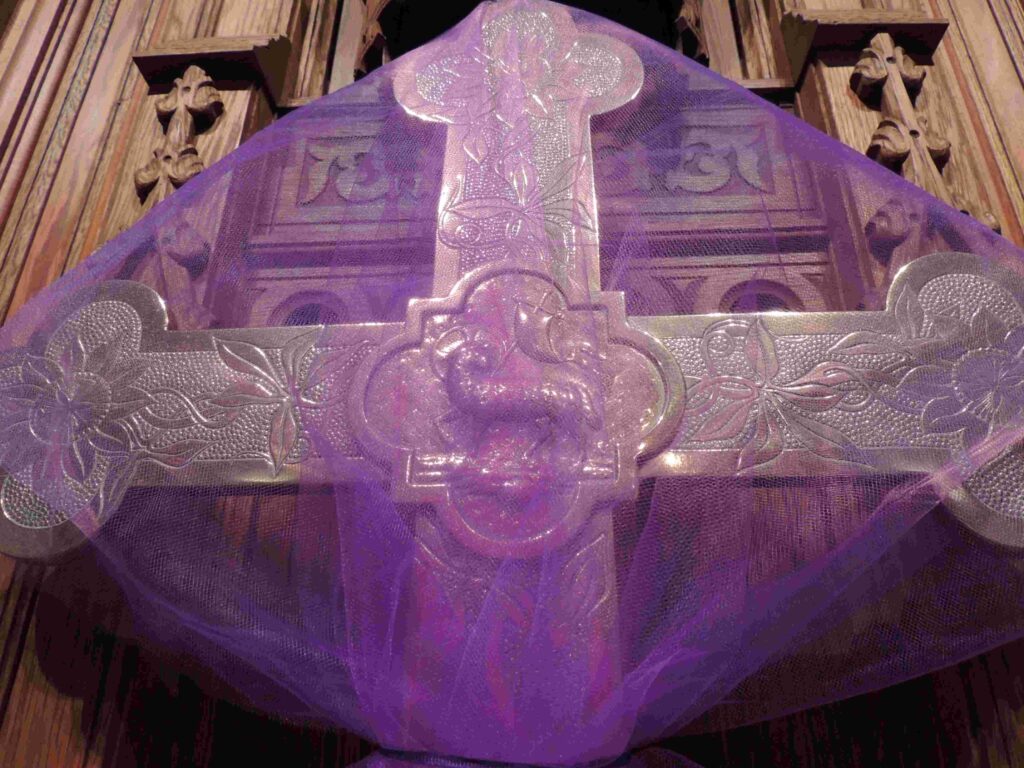A Lenten Message from Fr. Lonnie Lacy
Lent is the 40-day season of fasting and prayer leading to Easter. The word “Lent” comes from the Old English “lencten,” referring to Spring and the “lengthening” of days that occurs at this time of year. Why 40 days? Because that’s how long our Lord fasted and prayed in the wilderness after his baptism. During this season, our worship adopts a uniquely reflective and penitential tone. In place of our typically festive approach to worship, these changes allow us to experience a different side of the Christian life as we journey with Christ to the cross, the grave, and ultimately to resurrection.
CHANGES YOU SEE & HEAR:
PURPLE: The liturgical color for Lent is typically purple, symbolizing penitence. Unbleached linen may also be used. St. John’s has utilized both over the years.
VEILED CROSSES: Our more ornate processional and altar crosses represent the glory of the resurrected Christ. In Lent, we veil these items in purple to shift our attention away from glory and splendor and to remember that God is also found in the simple, the humble, and the sacrificial.
ALLELUIA: “Alleluia” is a joyful word derived from the ancient Hebrew “hallelujah.” It is the most festive word we have. As such, we lay it aside during Lent and do not employ it in our music or liturgy until Easter morning.
MUSIC: Our music, like in all liturgical seasons, seeks to reflect and magnify the liturgy. You’ll hear anthems often without accompaniment (a capella), hymns with haunting harmonies, (major and minor), and texts that prompt introspection and renewed intimacy with God.
DECALOGUE & CONFESSION: In Lent, our Sunday worship begins with the recitation of the Ten Commandments (also known as the Decalogue) and the Confession of Sin. Placing the Confession up front allows us to acknowledge our sins and to seek God’s forgiveness at the outset before we enter into the rest of worship.
KYRIE ELEISON: In place of the usual triumphant Gloria, we sing, “Lord have mercy, Christ have mercy,” also sometimes sung in Greek as “Kyrie eleison, Christe eleison.” The Greek is pronounced keer′-ee-ay ee-lay′-ee-sohn, crist′-ay ee-lay′-ee-sohn.
LAMB OF GOD: At the breaking of the bread, we sing the words, “Lamb of God, you take away the sins of the world; have mercy on us,” in place of our more festive fraction anthems.
EUCHARISTIC PRAYER C: Affectionately known by many Episcopalians as the “Star Wars prayer” thanks to its reference to “the vast expanse of interstellar space, galaxies, suns, the planets in their courses,” the true beauty of Eucharistic Prayer C lies in its penitential theology. As we gather around the Holy Table and tell the story of our salvation, we use this prayer to proclaim the fundamental truth of our atonement: “By his blood, he reconciled us. By his wounds, we are healed.” It is only by the selflessness and sacrifice of our Lord Jesus Christ that we obtain healing, mercy, grace, and everlasting life.
Related Articles:


